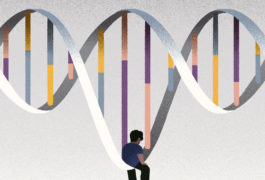Study links autism to high levels of fat hormone
Autism may be accompanied by high levels of the hormone leptin in early childhood.

Autism may be accompanied by high levels of the hormone leptin in early childhood.

Autism is predominantly genetic in origin, but a growing list of prenatal exposures for mother and baby may sway the odds.

The latest study to show that autistic children tend to be overweight suggests that the risk is greatest for those at the severe end of the spectrum.

Nearly half of American children with autism aged 10 to 17 are overweight or obese.

Adults on the spectrum frequently have a range of other conditions — but they rarely get the help they need.
A prospective study shows that antipsychotics mess up metabolism, autism is tied to a doubled risk for food allergies, and a report reveals pervasive sexual harassment in science.

Young people with autism have more psychiatric and medical conditions than do their typical peers or those with attention deficit hyperactivity disorder.

Boys with autism have smaller heads, are shorter and weigh less at birth than typical children do — but all that changes by age 3.
Autism is not associated with ultrasound frequency or duration, maternal age and education affect autism odds, and people on the spectrum benefit from their ‘special interests.’

Autism’s underlying biology, associated behaviors and treatments can all put people on the spectrum at serious risk for obesity.